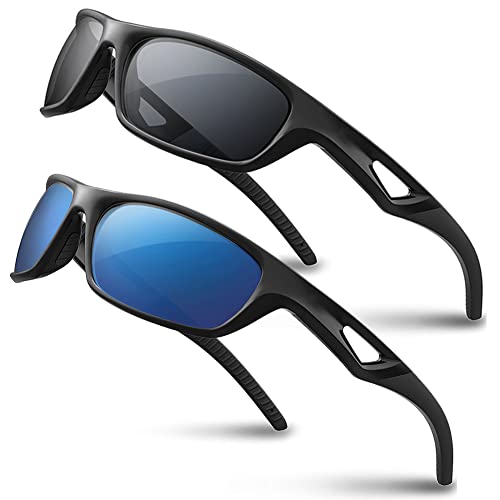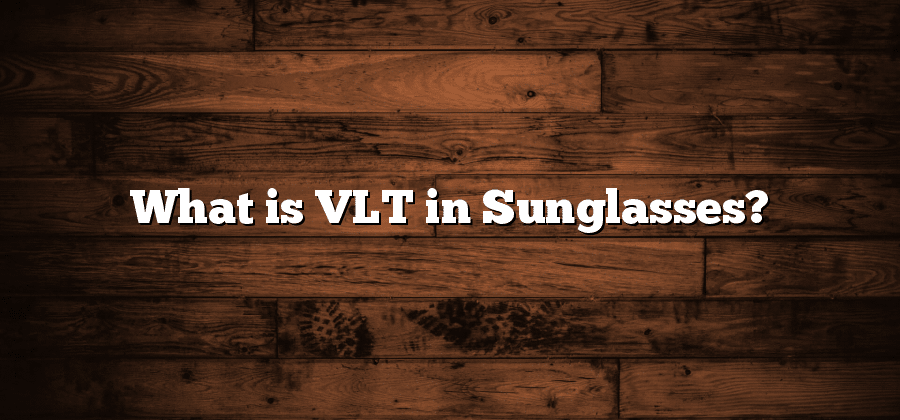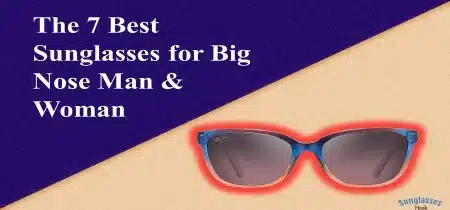Sunglasses serve as more than just a fashion accessory; they play a vital role in protecting our eyes from harmful UV rays and providing visual comfort in bright environments. While selecting sunglasses, you may have come across the term “VLT” or “Visible Light Transmission.” This article aims to provide a comprehensive understanding of what is VLT in sunglasses, its significance, and how it impacts your vision and eye health.
1. What is VLT?

Visible Light Transmission (VLT) refers to the amount of light that passes through a lens or lens material. Expressed as a percentage, VLT indicates the level of brightness or darkness provided by sunglasses. A higher VLT percentage means more light transmission, resulting in brighter lenses, while a lower VLT percentage means less light transmission, resulting in darker lenses.
2. The Importance of VLT
2.1 Protection against UV Rays
Ultraviolet (UV) rays, particularly UVA and UVB, can cause significant damage to our eyes. Excessive exposure to UV rays can lead to various eye conditions, including cataracts, macular degeneration, and even cancer. Sunglasses with an appropriate VLT help shield our eyes from harmful UV rays, reducing the risk of these conditions.
2.2 Visual Comfort
Glare from bright sunlight can cause eye strain, discomfort, and difficulties in visual perception. Selecting sunglasses with an optimal VLT percentage helps manage the amount of light entering our eyes, providing visual comfort in various lighting conditions. The appropriate VLT level minimizes glare, allowing for better visual clarity and improved depth perception.
3. Factors Affecting VLT
3.1 Lens Color
Lens color plays a crucial role in determining VLT. Different lens colors filter light differently, impacting the overall VLT percentage. For instance:
– Gray or Smoke Lenses: These lenses provide a neutral and true-color perception. They are ideal for bright, sunny conditions and often have a lower VLT percentage, offering better glare reduction.
– Brown or Amber Lenses: These lenses enhance contrast and depth perception, making them suitable for outdoor activities like hiking or skiing. They generally have a moderate VLT percentage.
– Yellow or Orange Lenses: These lenses enhance contrast and are commonly used in low-light or foggy conditions. They typically have a higher VLT percentage, allowing more light transmission.
3.2 Lens Coatings and Tints
Lens coatings and tints can further modify the VLT of sunglasses. Anti-reflective coatings reduce glare, while mirror coatings reflect more light, resulting in a lower VLT. Tints such as gradient or polarized tints can also impact VLT. Gradient tints are darker at the top and gradually become lighter, while polarized tints reduce glare and improve visual clarity.
4. Selecting the Right VLT
Choosing the appropriate VLT for your sunglasses depends on various factors, including your intended use, lighting conditions, and personal preferences. Consider the following guidelines:
4.1 Outdoor Activities
For intense outdoor activities like mountaineering, skiing, or water sports, sunglasses with a lower VLT percentage (e.g., 10-20%) are recommended. These darker lenses provide excellent protection against bright sunlight and reduce glare.
4.2 Everyday Use
For everyday use in moderate to bright lighting conditions, sunglasses with a moderate VLT percentage (e.g., 20-40%) are suitable. These lenses offer a balance between protection and visual clarity.
4.3 Low-Light Conditions
In low-light conditions, such as fog, dusk, or overcast days, sunglasses with a higher VLT percentage (e.g.,
40-70%) are preferable. These lenses allow more light transmission to enhance visibility.
5. Additional Considerations
5.1 Prescription Sunglasses
If you require prescription lenses, consult with your eye care professional to ensure the right VLT for your specific needs. Prescription sunglasses can be tailored to meet your vision requirements while providing optimal protection and comfort.
5.2 Compliance with Standards
When purchasing sunglasses, ensure they meet industry standards for UV protection. Look for labels indicating 100% UV or UV400 protection to ensure your eyes are adequately shielded from harmful rays.
Conclusion
Visible Light Transmission (VLT) is an essential factor to consider when choosing sunglasses. By selecting sunglasses with an appropriate VLT percentage, you can effectively protect your eyes from UV rays, reduce glare, and enhance visual comfort. Whether you engage in outdoor activities or require sunglasses for everyday use, understanding VLT empowers you to make informed decisions about the lenses that best suit your needs. Prioritize eye health by investing in sunglasses that offer the right balance of protection and visual clarity, ensuring your eyes are well-cared for in every situation.



Recent Comments